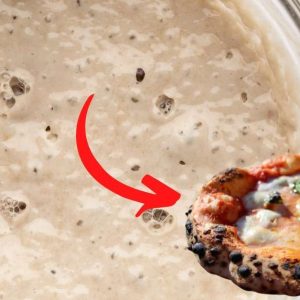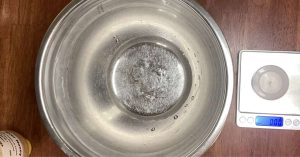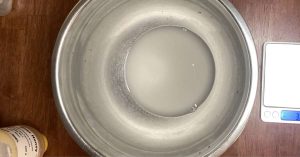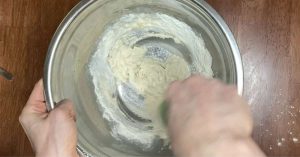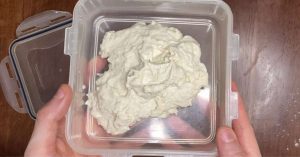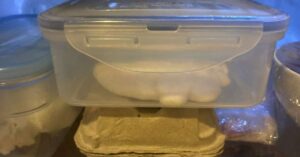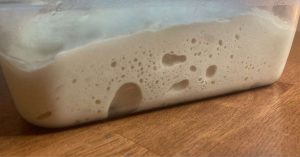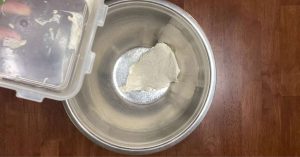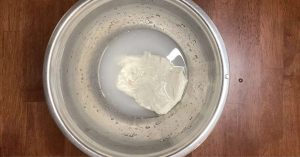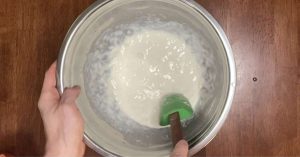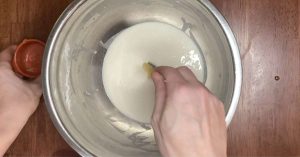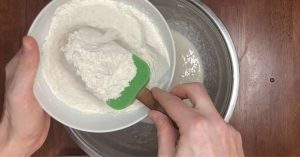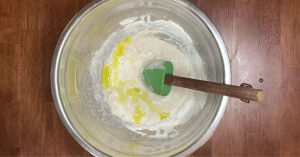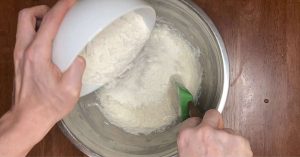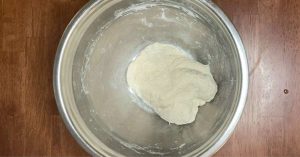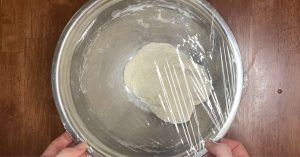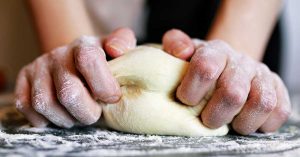Add poolish to mixing bowl.
Add lukewarm water to poolish in mixing bowl.
Mix poolish with water until the poolish has been completely liquified. It should become white and foamy as flour and gas from the poolish is released.
Add honey and mix well.
Mix flour and salt together in separate a bowl and add about half of this mixture to the poolish and water. It helps to add the flour/salt incrementally and mix.
When half of the flour/salt has been added, add olive oil and mix until it's fully incorporated.
Add the rest of the flour/salt and mix it until all of the dry ingredients have been hydrated by the wet ingredients. Cover the bowl tightly and let this mixture rest for 15 minutes.
When 15 minutes have passed, give the dough mixture another quick stir with the spatula. It works best to fold the dough on top of itself several times then form it into the rough shape of a ball, but however you do it should work as well.
You should notice that the consistency of the dough is much smoother and less sticky than it was previously, this means the gluten is starting to form.
At this point you have a choice - you can either knead the dough for about 15-20 minutes until the gluten fully forms or you can leave it to rest overnight in the fridge. Both of these methods will encourage gluten formation which is what makes for a good crust.
The overnight no-knead method is best in terms of simplicity and the double fermentation effect, but if you need the dough the same day you'll have to knead it by hand until the dough is elastic and smooth.
Personally, I like to let it rest overnight rather than knead it by hand. I find the results are much better and more consistent.
Tip: If you've never kneaded pizza dough before, you can make the process easier (but slightly longer) by kneading for only a few minutes at a time and letting it rest for 15 minutes in between. Each time it rests, the dough will become stronger, less sticky, and easier to work with.
When kneading, coat your hands with a (very) small amount of olive oil, lift the dough up and slap it back down onto the counter while folding it over onto itself. Repeat this 3 or 4 times then let it rest for 15 minutes. Repeat this whole process until the dough becomes elastic and smooth then form it into a ball.
When the dough has been refrigerated overnight (or kneaded), divide it in half and form each half into a smooth and tight ball. Place the balls onto a lightly oiled pan and cover it gently with plastic wrap so it can expand. Let the balls proof for 3-4 hours at room temperature before shaping them into a pizza, or longer depending on how hot or cold your house is. If you only plan on using 1 of the balls, you can place the other in the fridge and skip the proofing process.
If you need help balling and proofing pizza dough, you can find a link to a tutorial at the top of this page.
